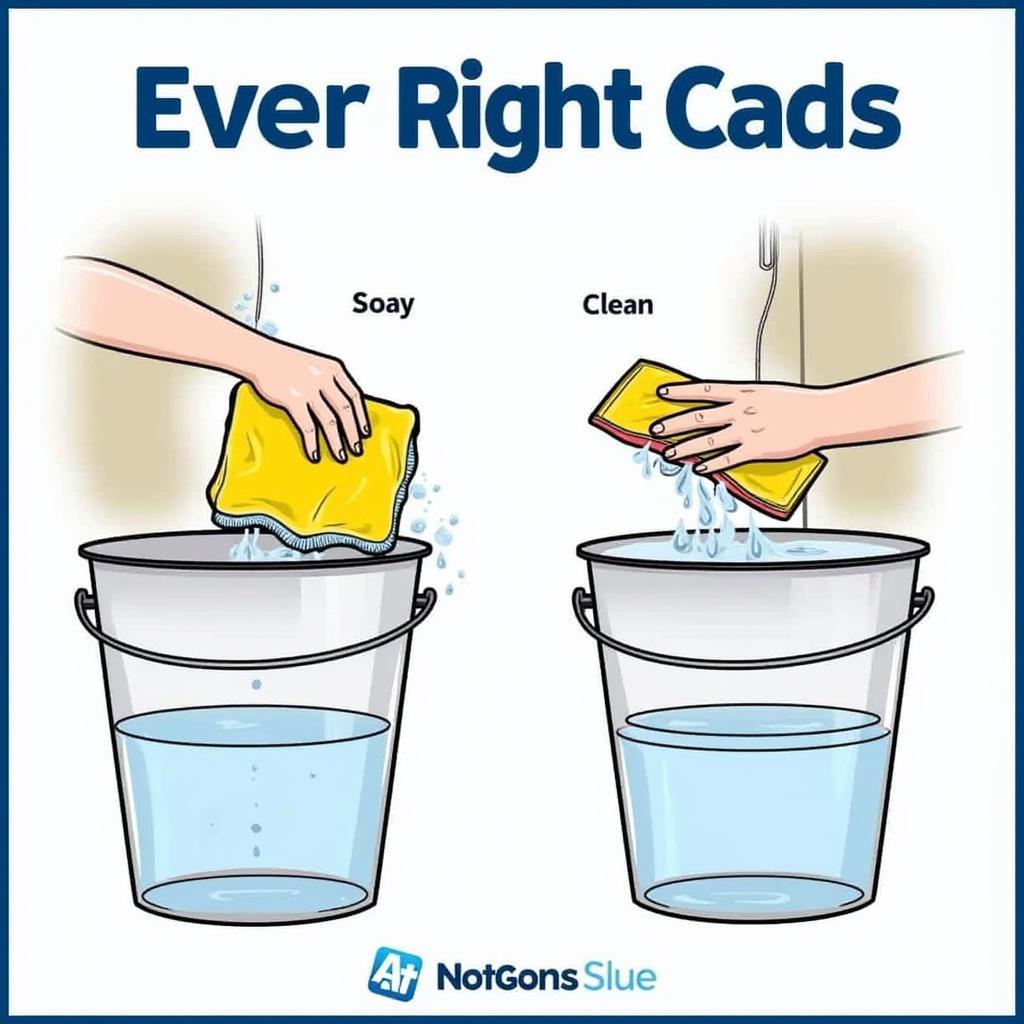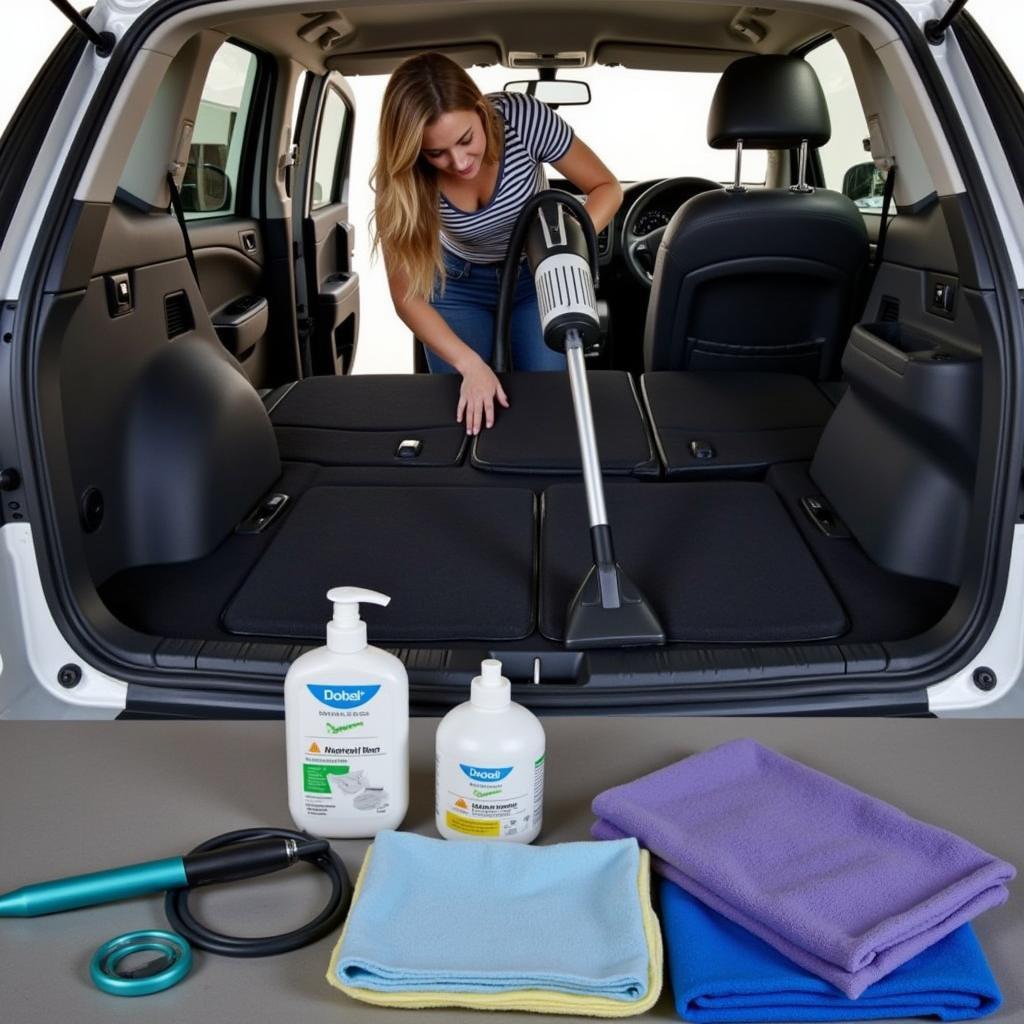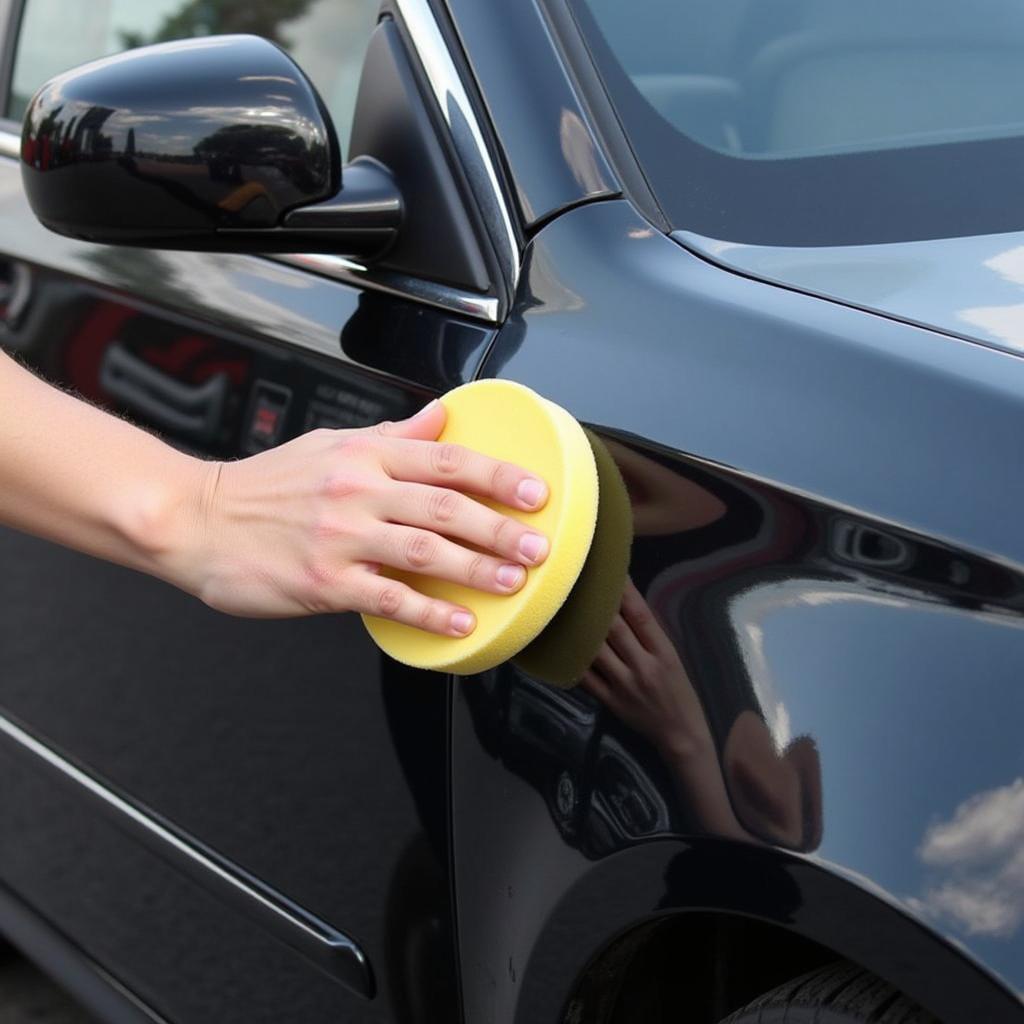Detailing your car can seem daunting, but with the right approach and a little elbow grease, you can achieve professional-looking results at home. This guide will cover everything you need to know about How To Diy Detail A Car, from washing and drying to polishing and protecting.
Washing and Drying Your Car: The Foundation of Detailing
A thorough wash is the first step in any car detailing process. Don’t underestimate the importance of this stage. A proper wash removes loose dirt and grime, preparing the surface for the more intricate detailing steps that follow. Use a quality car wash soap and two buckets – one for soapy water and the other for rinsing your wash mitt. This two-bucket method prevents cross-contamination and minimizes swirl marks. Start at the top of the car and work your way down, rinsing your mitt frequently.
After washing, drying is crucial to prevent water spots. Use a microfiber drying towel and blot the water instead of dragging the towel across the paint. Consider using a drying aid to help lubricate the surface and further reduce the risk of scratches. This is an essential step in how to DIY detail a car effectively.
 Washing Car Using Two-Bucket Method
Washing Car Using Two-Bucket Method
Interior Detailing: Creating a Pristine Cabin
Once the exterior is clean and dry, move inside the car. Start by removing any trash and personal belongings. Then, thoroughly vacuum the carpets and floor mats. Use a detailing brush to get into hard-to-reach areas like vents and crevices. For upholstery, use a suitable cleaner and follow the product instructions carefully. Leather seats require a dedicated leather cleaner and conditioner to maintain their suppleness and prevent cracking. Don’t forget to clean the windows and mirrors using a dedicated glass cleaner. Knowing how to DIY detail a car also includes knowing how to create a comfortable and clean interior environment.
 Interior Car Detailing with Vacuuming and Cleaning
Interior Car Detailing with Vacuuming and Cleaning
Paint Correction: Removing Imperfections
Paint correction involves removing swirl marks, scratches, and other imperfections from the car’s paint. This step is optional but can significantly enhance the appearance of your car. If you’re new to detailing, start with a mild polish and a soft polishing pad. Apply the polish using a dual-action polisher or by hand, working in small sections. Be careful not to apply too much pressure, as this can damage the paint. This stage of how to DIY detail a car requires patience and attention to detail.
Protection: Sealing the Shine
After washing, drying, and potentially correcting the paint, it’s time to protect your hard work. Applying a sealant or wax creates a protective layer that helps repel water and contaminants, keeping your car cleaner for longer. Wax provides a warm, glossy finish, while sealants offer a more durable and long-lasting protection. Apply the product evenly using an applicator pad and buff off any excess with a microfiber towel. For more information on specific detailing techniques, check out how to detail your car seats with soap and wash.
 Applying Car Wax for Protection
Applying Car Wax for Protection
Conclusion: Mastering the Art of DIY Car Detailing
Learning how to DIY detail a car can be a rewarding experience. By following these steps, you can achieve professional-looking results and keep your car looking its best. Remember to use quality products and take your time. With practice, you’ll become more efficient and confident in your detailing abilities. If you want a quicker and easier approach, find out how to detail a car cheaply. Or, if you are looking for a more personalized approach, explore how to detail my own car. You can also learn more general tips at how to DIY car detailing.
FAQ
-
What is car detailing?
Car detailing is a thorough cleaning, restoration, and finishing of a vehicle, both inside and out, to produce a show-quality level of detail. -
How often should I detail my car?
Ideally, every 3-6 months. -
What are the essential car detailing tools?
Wash mitts, microfiber towels, car wash soap, wheel cleaner, tire dressing, and a vacuum cleaner are essential. -
Can I detail my car in direct sunlight?
No, it’s best to detail your car in the shade or a garage. -
How much does it cost to detail a car myself?
DIY detailing can cost significantly less than professional detailing, usually between $50-$150 depending on the products you choose. -
How long does it take to detail a car?
Depending on the level of detail, it can take anywhere from a few hours to a full day. -
What’s the difference between waxing and sealing?
Wax provides a glossy finish, while sealant offers more durable protection.
Potential scenarios when asking about DIY car detailing:
- Scenario 1: A person wants to save money by detailing their car themselves.
- Scenario 2: An enthusiast wants to learn the proper techniques for maintaining their car’s appearance.
- Scenario 3: Someone preparing their car for sale wants to increase its value.
Other helpful articles you might be interested in:
- How to remove scratches from car paint.
- Choosing the right car wax for your vehicle.
- Best interior car cleaning products.
Need help with your car detailing journey? Contact our 24/7 customer support via WhatsApp: +1(641)206-8880 or Email: [email protected].

Leave a Reply